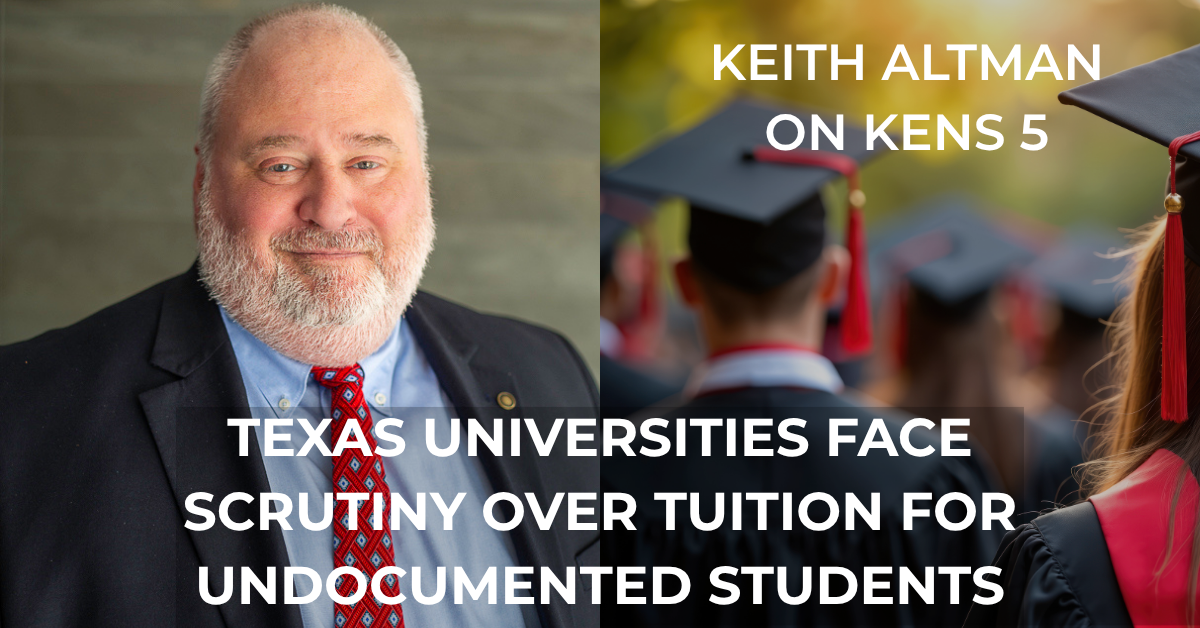Imagine being the parent of a child with a disability who has finally received the support they need through an Individualized Education Program (IEP). After years of advocacy and waiting lists, your child now attends an inclusive classroom, receives speech therapy twice a week, and is making progress both academically and socially. Now imagine waking up to the news that the very system protecting your child’s rights is about to be dismantled. This is the reality many families, educators, and advocates have been grappling with as the Trump administration pushes forward plans to close the U.S. Department of Education and transfer oversight of special education to the Department of Health and Human Services.
These changes are not minor bureaucratic adjustments. They raise profound questions about the future of the Individuals with Disabilities Education Act (IDEA), a landmark law that has safeguarded the rights of millions of students for nearly fifty years. To fully grasp what is at stake, it is essential to understand the legal and historical foundations of special education in the United States, the operational chaos unleashed by recent policy shifts, and the lived experiences of families and educators who rely on these protections.
The Historical and Legal Foundations of Special Education
When Congress passed the Education for All Handicapped Children Act in 1975, it marked a turning point in American education. Prior to this legislation, over 1.8 million children with disabilities were completely excluded from public schools, while millions more were warehoused in segregated institutions with minimal instruction. The law, later renamed the Individuals with Disabilities Education Act (IDEA), guaranteed every eligible child a Free Appropriate Public Education (FAPE) in the least restrictive environment. It established the right to an Individualized Education Program tailored to each child’s needs and required parental participation and procedural safeguards to ensure accountability.
IDEA was not simply an educational policy; it was a civil rights milestone that reframed disability as a matter of access and equity. Over time, the law expanded its reach, covering a broader spectrum of disabilities, including autism spectrum disorder and traumatic brain injury. Federal oversight by the Office for Civil Rights strengthened accountability and challenged longstanding inequities such as the disproportionate placement of minority students in special education programs.
The evolution of IDEA has transformed classrooms across the country. Inclusive models that integrate students with disabilities alongside their peers have become more common, early intervention services now reach children before they enter kindergarten, and judicial decisions like Endrew F. v. Douglas County School District in 2017 clarified that schools must provide programs that enable meaningful progress, not minimal benefit. The Office of Special Education Programs (OSEP), housed within the Department of Education, has played a crucial role in implementing these protections, distributing billions in funding and guiding schools to meet their obligations.
The Trump Administration’s Disruptive Proposal
In March 2025, President Trump issued an executive order directing the closure of the Department of Education, framing the move as an effort to return authority to states and reduce federal bureaucracy. Within days, the administration announced that oversight of special education would be transferred to the Department of Health and Human Services under Secretary Robert F. Kennedy Jr.
This shift immediately alarmed advocates and educators. HHS, primarily a medical agency, has little expertise in education policy, inclusive practices, or the complex legal requirements of IDEA. Kennedy himself, known for controversial positions on autism and vaccines, was widely criticized for lacking the background to manage a system grounded in educational rights rather than medical diagnoses.
The executive order also sparked a wave of layoffs. The Education Department’s workforce was reduced by nearly half, including experienced civil rights attorneys and special education specialists. This exodus created an immediate loss of institutional knowledge, leaving school districts without clear guidance on compliance. According to an internal report from the Office for Civil Rights, case resolutions dropped by 40 percent even as complaints of IDEA violations increased by nearly 10 percent.
The Impact on Schools and Families
The effects of these changes have been felt on the ground. In Sacramento, a parent named Linda Martinez described how her son’s IEP meeting was postponed indefinitely because the district could not confirm whether new federal reporting requirements were in effect. “We were told to wait because the state didn’t know who they were supposed to answer to anymore,” she said. Her son, diagnosed with autism, missed several weeks of behavioral therapy services while the district tried to interpret shifting federal guidelines.
In another case from Oklahoma, a rural district halted plans to hire a new special education teacher because it was unclear whether federal Part B funds would still flow on schedule. Teachers in the district reported an immediate decline in support for students with complex needs.
Educators themselves have been vocal about the vacuum of leadership. A special education coordinator from Maryland explained, “Before, we could call OSEP for guidance when a case was complicated. Now there is no one to call. We are left to interpret the law on our own.”
Project 2025 and the Restructuring of IDEA
The administration’s actions are part of a broader initiative called Project 2025, a policy roadmap developed by the Heritage Foundation. This plan aims to reduce the federal government’s role in education and give states more control over how they use federal funds. For special education, the proposal would replace the current system of federal oversight under IDEA with block grants.
Under this approach, states would receive a lump sum of money with very few conditions attached. School districts would no longer be required to follow strict federal rules for creating individualized education programs or ensuring procedural safeguards for students with disabilities. Families could be offered Education Savings Accounts that they could use to pay for private school tuition, therapy services, or other options outside the public school system.
Supporters believe this would give parents more flexibility to choose the services they want for their children. They argue it would reduce paperwork, save money, and allow states and local communities to innovate without being tied to federal regulations. They often highlight examples of states with school choice programs and claim that shifting power closer to families would improve outcomes for students.
Critics see the plan very differently. They warn that without uniform national standards, services for students with disabilities would vary widely from state to state. Wealthier districts might keep their programs intact, but underfunded communities would likely face cuts or lose critical services altogether. The plan would also remove the “maintenance of effort” requirement that stops states from reducing their own spending on special education. Without that safeguard, states could simply lower their budgets and rely on the block grant, which would reduce the overall amount of funding available to students who need it most.
Educators in states with limited resources are already expressing deep concern. A superintendent from South Carolina said, “We already struggle to meet our students’ needs even with federal support. Without it, I fear we will return to the days when many children with disabilities were left at home because schools could not or would not serve them.”
Civil rights advocates point out that this is exactly why IDEA was created in 1975. Before the law existed, millions of children with disabilities were denied access to public education or placed in segregated, inadequate classrooms with no accountability. IDEA established a baseline of rights for every child, regardless of where they live. Removing federal oversight would undo decades of progress and make those rights dependent on the priorities and budgets of individual states.
Legal experts also warn that a block grant model would likely lead to more lawsuits. Families who lose access to services would have no clear national framework to rely on, forcing them to sue state or local governments individually. At the same time, private schools and therapy providers funded through Education Savings Accounts are not bound by the same civil rights protections as public schools. Students could end up in programs that are poorly regulated, low in quality, or even discriminatory.
The shift to block grants would not only affect funding. It would fundamentally change the purpose of IDEA, turning it from a civil rights law into a flexible spending program. For many advocates, this is not a debate about bureaucracy but about whether children with disabilities should continue to have a federally guaranteed right to a free and appropriate public education.
Project 2025 reflects two very different visions of education. One sees it as a public good that requires national standards to ensure fairness and inclusion for every child. The other sees it as a marketplace where families should have the freedom to choose services, even if that freedom comes with fewer protections and greater inequality.
What happens next will depend on how much political momentum this plan gains and how strongly the public responds. Disability rights groups, educators, and community leaders are already organizing to oppose these changes. They argue that IDEA was built on decades of hard-fought advocacy and legal victories, and dismantling it would roll back fundamental rights for some of the most vulnerable students in the country.
Medicalizing Education: A Fundamental Shift
Moving special education oversight to HHS introduces another risk: reframing disability as a strictly medical condition rather than an educational and social issue. Teachers design accommodations and differentiated instruction to help students succeed in the classroom. These are educational decisions, not medical prescriptions.
Critics argue that HHS’s medical orientation could revive a deficit-based model of disability, emphasizing treatment over inclusion. This shift would undermine decades of progress toward viewing students with disabilities as full participants in school communities. Advocates worry about increased stigma and the erosion of the social model of disability, which highlights the role of systemic barriers rather than inherent deficits.
Legal Pushback and Congressional Resistance
The administration’s restructuring efforts have already faced legal challenges. Disability rights organizations, including the Education Law Center, have filed lawsuits arguing that the transfer of OSEP violates IDEA, which explicitly places oversight within the Department of Education. Several federal judges have signaled that the executive branch lacks the authority to unilaterally move these functions.
Meanwhile, Congress has begun to intervene. Bipartisan legislation has been introduced to restore Education Department staffing and block the transfer of special education programs to HHS. Lawmakers from both parties have expressed concern that these changes threaten civil rights protections and create chaos for states and districts.
However, the situation remains fluid. While the Supreme Court allowed workforce reductions at the Education Department to proceed, it has not yet ruled on whether the transfer of oversight to HHS is constitutional.
What Is at Stake
At its core, the current debate is about whether the rights guaranteed by IDEA will remain enforceable. Without federal oversight, the promise of Free Appropriate Public Education could become hollow. Districts might interpret their obligations differently, leading to a patchwork of services that vary dramatically from one state to another.
The long-term impact on students could be profound. Research consistently shows that students with disabilities who receive high-quality support are more likely to graduate, find employment, and live independently. Conversely, when services are inadequate, outcomes decline sharply, leading to higher dropout rates, unemployment, and increased reliance on social services.
If these changes move forward, the United States risks returning to a time when students with disabilities were marginalized, excluded, and denied the opportunities their peers take for granted.
The Path Forward
Ultimately, only Congress has the authority to amend the Individuals with Disabilities Education Act (IDEA) or dismantle the Department of Education. While a president can issue executive orders and redirect funding, the core legal protections for students with disabilities cannot be changed without congressional action. This is why advocates stress the importance of keeping pressure on lawmakers to preserve the civil rights framework that has taken decades to build.
Disability rights groups like the Council for Exceptional Children and the National Disability Rights Network are already mobilizing. They are encouraging parents, educators, and community leaders to share their stories and highlight the real-world impact of any cuts or policy changes. Families are being urged to attend town halls, contact their representatives, and participate in public hearings. At the same time, legal organizations are preparing to challenge any moves that weaken federal oversight or shift responsibility to agencies that lack expertise in education. Courts have previously stepped in to block rules that undermined IDEA protections, and similar legal action could be used again if needed.
Public awareness will play a decisive role. History shows that when families and educators speak up, they can influence public opinion and change the course of policy. During earlier attempts to reduce special education funding, parents and teachers organized successfully, and Congress ultimately backed away from deep cuts. Polling today shows that a strong majority of Americans, regardless of political affiliation, believe the federal government should continue to ensure equal educational opportunities for students with disabilities.
Media coverage will be critical. When news outlets report on the direct consequences of policy changes such as students losing access to speech therapy, inclusive classroom support, or specialized transportation it creates urgency and puts pressure on policymakers. Grassroots organizing will also matter. Parent advocacy groups, teacher unions, and disability coalitions are already coordinating to deliver a unified message. They are building coalitions that include not only educators and families but also healthcare workers, faith-based groups, and local business leaders who understand that inclusive education benefits society as a whole.
The way forward will require a combined effort. Advocacy at the state and federal levels, legal challenges where necessary, and community-driven campaigns will all be needed to protect IDEA. Bipartisan collaboration will be especially important. Disability rights have traditionally received support from both parties, and advocates are working to keep it that way rather than allowing the issue to become a political battleground.
In the end, protecting the rights of students with disabilities is not just about law or policy. It is about values. It is about affirming that every child, regardless of their abilities, has the right to learn, grow, and participate fully in their community. Whether this moment leads to progress or rollback will depend on how much families, educators, and ordinary citizens are willing to speak up and demand action.
Conclusion
The Trump administration’s efforts to dismantle the Department of Education and reassign special education oversight to HHS represent a fundamental shift in how the nation views disability, education, and civil rights. While presented as a push for local control and flexibility, these policies threaten to unravel decades of progress.
The future of special education now hinges on whether Congress and the public will act to defend IDEA. Without strong legislative and civic intervention, millions of students with disabilities could lose the protections that ensure their right to learn, thrive, and participate fully in society.





